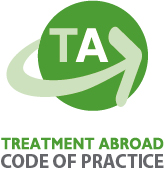A dirty feeder can harbor lots of bacteria and even toxic black mold and pathogens, just due to natural elements. You also have the option to opt-out of these cookies. And, contrary to popular belief, you can't wait until the liquid is cloudy to know it's time for it to be changed. document.getElementById( "ak_js_1" ).setAttribute( "value", ( new Date() ).getTime() ); 2023 Consumer Queen Sage Theme by Restored 316, If you're looking to save money on groceries, Aldi is t, Did you know there are secret coupon codes you can use, Two new items are on the menu at Freddy's Frozen Custar, Looking for an easy way to style your long hair? Bleach may contain a lot of toxic chemicals that can be harmful to those birds. There are many safer and more targeted solutions available for controlling garden and household pests. Stick with traditional red feeders, as red is known to attract hummingbirds. . Its not a lack of nectar source or colder weather that makes them leavethey know its time based on changes in the length of the day and the angle of the sun. Powdered sugar contains cornstarch that could ferment their nectar, causing them some discomfort that could lead to further health complications if immediate attention is not given. Or take action immediately with one of our current campaigns below: The Audubon Bird Guide is a free and complete field guide to more than 800 species of North American birds, right in your pocket. Plus, it is an adequate size to purchase for multiple feeding stations. Do not add red food coloring to the nectar or buy prepared nectar that is colored. At a minimum, you'll need to change the nectar every 3-5 days. Okay, there's a difference that I've always wondered about. A:In most areas of North America where hummingbirds leave during the winter, its best to put the feeder out about a week before they normally arrive in your yard. You can search fornative plants that yourhummingbirds naturally visit using our native plants database. Researchers at the University of California, Riverside experimented with over 100 hummingbirds, allowing them to choose between two feedersone with just sugar water, the other with scents indicating the presence of insects. Answer: Sevin Ready to Spray is not approved for use on lawns, possibly because it could cause damage to turfgrass or has been shown to be otherwise unsafe for this use. . No, you cannot use powdered sugar in hummingbird feeders. "If there is a nest near the feeder, the wasps tend to be more aggressive around their nests. Boiling the water or leaving it out to evaporate the chlorine out of does not work with chloramine. Fill up your bucket or sink with whichever cleaning solution you choose, which can be either a mixture of vinegar, bleach, or warm and soapy water. 1. Birds will nest near feeders so it's necessary to keep them clean and full of nectar for the entire season the birds are there. Yes, this is true. Even though there are instructions on the internet that say to use 1/4 cup of bleach per gallon of water or a 1/10 ratio of bleach to water, I personally would avoid this option. I know I do, and what better way to pamper yourself than a relaxing bath using these full moon lavender bath bombs! Out of these, the cookies that are categorized as necessary are stored on your browser as they are essential for the working of basic functionalities of the website. Other uncategorized cookies are those that are being analyzed and have not been classified into a category as yet. This does not attract the birds more than red plastic feeder parts and the extra chemical is not going to make the birds healthier! Check below for details on how it can be safely used. Vinegar does not harm hummingbirds. Chances are that you already have vinegar at your home. For cold weather feeding, either bring the feeder indoors overnight when it gets cold and put it back outside first thing in the morning (hummingbirds need to feed as early as possible, especially when its cold, to keep their energy up) or you can hang an incandescent light bulb near the feeder. Where gloves for the duration of the cleaning process. Keep rinsing it until your feeder is completely clean now and there are no traces of impurities left behind. To learn how to get rid of mold on a hummingbird feeder, scroll down! How to clean a hummingbird feeder with vinegar. Yes, but I would not recommend keeping the nectar for more than one week. Garlic Vinegar will give you a neat & clean hummingbird feeder. Wash in a solution of 1 tablespoon of white vinegar and 1 cup of water. You may have to clean the feeder 2-3 times per week. if(typeof ez_ad_units!='undefined'){ez_ad_units.push([[336,280],'sanitisationsingapore_com-netboard-1','ezslot_15',115,'0','0'])};__ez_fad_position('div-gpt-ad-sanitisationsingapore_com-netboard-1-0');Make sure to scrub every single part and remove all the residue of mold and nectar that is present inside the feeder. By signing up you are agreeing to receive emails according to our privacy policy. Stir in 1 cup of sugar. More birds will empty the feeder faster so you should quickly clean it every time before refilling. Some people recommend using white vinegar, and today we're going to show you how to do it! You can also use vinegar. Even if they do not take in enough nectar dosed with malathion, Sevin or diazinon to kill them directly, the number of small insects available to them in your garden will drop precipitously. Check details about usage below. Reply. However, its better not to have your hummingbirds drink very cold nectar; this can actually cold-stun them. Answer: Sevin Concentrate will not harm birds or other wildlife when applied as directed on the product label. If bears are frequenting your feeders, take the equipment down and move it inside. Its the least you can do. If you are at all unsure, however, you should consult the guidelines to make sure you do not damage your feeder. Cool the mixture in such a way that it comes to room temperature. Article. Spread the word. To decrease the likelihood that the sugar or water introduces contaminants, try to sterilize the solution before filling the feeder. Honey bees, yellow jackets, wasps and other not so desirable winged ones invade your hummingbird feeders:(. Use only granulated sugar in your hummingbird feeders. Hummingbirds are pretty small, but they have an outsize sense of smell that helps them forage and stay out of danger. If not, you can still easily find it at any of your local stores. Vinegar does not harm hummingbirds. Once soaking is complete, use a long bottle brush to remove any excess black mold from the feeder. Several species of hummingbirds regularly overwinter along the Gulf Coast, southern Arizona, and south Florida. Bird-friendly landscaping provides food, saves water, and fights climate change. My preference will stay vinegar and H2O, not. Hungry bears won't hurt birds, but coming in close proximity to humans is dangerous for both their families and yours. Have several feeders, so that you can have at least one in use and one ready to substitute while the other one is clean. Copyright 2023 Quick-Advices | All rights reserved. Bad Feeders: Dirty hummingbird feeders can harbor toxic mold that kills hummingbirds, and feeders that leak excessively can attract bees and wasps that will attack hummingbirds. Hummingbirds need sugar. The Bird Flu Blazes On, Amping Up Concerns for Wildlife and Human Health, National Audubon Society to Celebrate The Birdsong Project at Benefit Event, Our Favorite Fascinating Bird Behaviors from the 2022 Audubon Photo Awards, Bald Eagle Parents Get Buried By Snow While Incubating Eggs, Why Native Plants Are Better for Birds and People, Help power unparalleled conservation work for birds across the Americas, Stay informed on important news about birds and their habitats, Receive reduced or free admission across our network of centers and sanctuaries, Access a free guide of more than 800 species of North American birds, Discover the impacts of climate change on birds and their habitats, Learn more about the birds you love through audio clips, stunning photography, and in-depth text. White vinegar is equally potent as hydrogen peroxide and won't hurt hummingbirds. Hot WinCo Dea, If you love shopping Bath & Body Works, you've come, Best Buy offers great prices on TVs, kitchen appliances, There are quite a few great deals at Homeland Grocery t, If you're looking for a cheap meal this week, Subway is. These jewel-feathered whirling dervishes eat half their body weight in bugs and nectar each day, according to the National Audubon Society. if(typeof ez_ad_units!='undefined'){ez_ad_units.push([[250,250],'sanitisationsingapore_com-medrectangle-4','ezslot_1',103,'0','0'])};__ez_fad_position('div-gpt-ad-sanitisationsingapore_com-medrectangle-4-0');We will teach you the best way to clean hummingbird feeders with vinegar so you can easily do it yourself too. Even red feeders with yellow parts could catch the eyes of foraging bees so choose an all-red and clear feeder if you can. if(typeof ez_ad_units!='undefined'){ez_ad_units.push([[300,250],'sanitisationsingapore_com-leader-3','ezslot_9',109,'0','0'])};__ez_fad_position('div-gpt-ad-sanitisationsingapore_com-leader-3-0');Cleaning the hummingbird feeders with vinegar will help you get rid of all the mold that has grown inside your feeder. No, it is not advisable to clean hummingbird feeders with soap, especially when your birds are fast eaters and you would have to clean their feeders each time they are empty. These cookies help provide information on metrics the number of visitors, bounce rate, traffic source, etc. Some sources recommend at least once a week, but to keep nectar healthy, we prefer to stick to the 3-5 day rule. See mySecrets to Growing Strawberries here. Thats why we avoid using bleach or detergent. Step #4: Soak every piece and part. Just follow this 7-step tutorial and you will have a clean hummingbird feeder again. However, you may visit "Cookie Settings" to provide a controlled consent. The short answer is no, however, your weak vinegar solution will also need to be rinsed thoroughly. Because of its acidity, always dilute white vinegar before spraying it on plants. The best solution I have found for keeping bees and wasps away from hummingbird feeders is mint extract of some sort. It kills mold with ease and removes build-up quickly. 2. if(typeof ez_ad_units!='undefined'){ez_ad_units.push([[300,250],'sanitisationsingapore_com-mobile-leaderboard-2','ezslot_12',114,'0','0'])};__ez_fad_position('div-gpt-ad-sanitisationsingapore_com-mobile-leaderboard-2-0');Vinegar will break down the mold and nectar that has built up inside your hummingbird feeder. Hummingbird feeders require regular cleaning lest they become contaminated with black mold and other fungi that can harm these beautiful creatures . There have been no extensive studies to show that the dye is harmful, but a hummingbird's kidneys are tiny and do not have to handle dyes in nature, since flower nectar is colorless. The cookie is used to store the user consent for the cookies in the category "Performance". If you are here to learn how to clean a hummingbird feeder, then keep reading because this article is especially for you. These cookies will be stored in your browser only with your consent. document.getElementById( "ak_js_1" ).setAttribute( "value", ( new Date() ).getTime() ); document.getElementById( "ak_js_2" ).setAttribute( "value", ( new Date() ).getTime() ); This field is for validation purposes and should be left unchanged. Vinegar will not harm your hummingbird feeder. Vinegar does not harm hummingbirds. Clorox Bleach Bleach solution might not always be necessary. Hummingbird feeders often develop mold inside them and guess what? if(typeof ez_ad_units!='undefined'){ez_ad_units.push([[250,250],'sanitisationsingapore_com-leader-1','ezslot_7',107,'0','0'])};__ez_fad_position('div-gpt-ad-sanitisationsingapore_com-leader-1-0');Especially if you dont like to use bleach for cleaning hummingbird feeders, then vinegar is the best option for you. Mold and fungus can cause . Tips on How to Keep Ants Away from a Hummingbird Feeder. Yellow, white, blue, or purple feeders, will be like bee magnets. Follow the guidelines for keeping the feeders clean, even if the nectar goes untouched. However, it's also important to visualize the nectar and change it any time it appears cloudy, contaminated with dirt or bugs, or the feeder is almost empty. To make the whole cleaning process smooth & easier, you will need to completely disassemble your feeder. All they want from us is the quick energy . Don't Serve Your Hummingbirds Any Artificial Coloring or Dyes! {"smallUrl":"https:\/\/www.wikihow.com\/images\/thumb\/3\/35\/Clean-a-Hummingbird-Feeder-Step-1-Version-2.jpg\/v4-460px-Clean-a-Hummingbird-Feeder-Step-1-Version-2.jpg","bigUrl":"\/images\/thumb\/3\/35\/Clean-a-Hummingbird-Feeder-Step-1-Version-2.jpg\/aid1508113-v4-728px-Clean-a-Hummingbird-Feeder-Step-1-Version-2.jpg","smallWidth":460,"smallHeight":345,"bigWidth":728,"bigHeight":546,"licensing":"
License: Creative Commons<\/a> License: Creative Commons<\/a> License: Creative Commons<\/a> License: Creative Commons<\/a> License: Creative Commons<\/a> License: Creative Commons<\/a> License: Creative Commons<\/a> License: Creative Commons<\/a> License: Creative Commons<\/a> License: Creative Commons<\/a> License: Creative Commons<\/a> License: Creative Commons<\/a> License: Creative Commons<\/a> License: Creative Commons<\/a> Quirindi Advocate Death Notices,
Inspire Brands Learning Hub Login,
Black Cookies Strain,
Doug Wright Obituary Florida,
Cleveland Ave Atlanta Crime,
Articles W
\n<\/p>
\n<\/p><\/div>"}, {"smallUrl":"https:\/\/www.wikihow.com\/images\/thumb\/9\/9b\/Clean-a-Hummingbird-Feeder-Step-2-Version-2.jpg\/v4-460px-Clean-a-Hummingbird-Feeder-Step-2-Version-2.jpg","bigUrl":"\/images\/thumb\/9\/9b\/Clean-a-Hummingbird-Feeder-Step-2-Version-2.jpg\/aid1508113-v4-728px-Clean-a-Hummingbird-Feeder-Step-2-Version-2.jpg","smallWidth":460,"smallHeight":345,"bigWidth":728,"bigHeight":546,"licensing":"
\n<\/p>
\n<\/p><\/div>"}, {"smallUrl":"https:\/\/www.wikihow.com\/images\/thumb\/3\/30\/Clean-a-Hummingbird-Feeder-Step-3-Version-2.jpg\/v4-460px-Clean-a-Hummingbird-Feeder-Step-3-Version-2.jpg","bigUrl":"\/images\/thumb\/3\/30\/Clean-a-Hummingbird-Feeder-Step-3-Version-2.jpg\/aid1508113-v4-728px-Clean-a-Hummingbird-Feeder-Step-3-Version-2.jpg","smallWidth":460,"smallHeight":345,"bigWidth":728,"bigHeight":546,"licensing":"
\n<\/p>
\n<\/p><\/div>"}, {"smallUrl":"https:\/\/www.wikihow.com\/images\/thumb\/b\/b2\/Clean-a-Hummingbird-Feeder-Step-4-Version-2.jpg\/v4-460px-Clean-a-Hummingbird-Feeder-Step-4-Version-2.jpg","bigUrl":"\/images\/thumb\/b\/b2\/Clean-a-Hummingbird-Feeder-Step-4-Version-2.jpg\/aid1508113-v4-728px-Clean-a-Hummingbird-Feeder-Step-4-Version-2.jpg","smallWidth":460,"smallHeight":345,"bigWidth":728,"bigHeight":546,"licensing":"
\n<\/p>
\n<\/p><\/div>"}, {"smallUrl":"https:\/\/www.wikihow.com\/images\/thumb\/a\/ad\/Clean-a-Hummingbird-Feeder-Step-5-Version-2.jpg\/v4-460px-Clean-a-Hummingbird-Feeder-Step-5-Version-2.jpg","bigUrl":"\/images\/thumb\/a\/ad\/Clean-a-Hummingbird-Feeder-Step-5-Version-2.jpg\/aid1508113-v4-728px-Clean-a-Hummingbird-Feeder-Step-5-Version-2.jpg","smallWidth":460,"smallHeight":345,"bigWidth":728,"bigHeight":546,"licensing":"
\n<\/p>
\n<\/p><\/div>"}, {"smallUrl":"https:\/\/www.wikihow.com\/images\/thumb\/2\/29\/Clean-a-Hummingbird-Feeder-Step-6-Version-2.jpg\/v4-460px-Clean-a-Hummingbird-Feeder-Step-6-Version-2.jpg","bigUrl":"\/images\/thumb\/2\/29\/Clean-a-Hummingbird-Feeder-Step-6-Version-2.jpg\/aid1508113-v4-728px-Clean-a-Hummingbird-Feeder-Step-6-Version-2.jpg","smallWidth":460,"smallHeight":345,"bigWidth":728,"bigHeight":546,"licensing":"
\n<\/p>
\n<\/p><\/div>"}, {"smallUrl":"https:\/\/www.wikihow.com\/images\/thumb\/9\/92\/Clean-a-Hummingbird-Feeder-Step-7-Version-2.jpg\/v4-460px-Clean-a-Hummingbird-Feeder-Step-7-Version-2.jpg","bigUrl":"\/images\/thumb\/9\/92\/Clean-a-Hummingbird-Feeder-Step-7-Version-2.jpg\/aid1508113-v4-728px-Clean-a-Hummingbird-Feeder-Step-7-Version-2.jpg","smallWidth":460,"smallHeight":345,"bigWidth":728,"bigHeight":546,"licensing":"
\n<\/p>
\n<\/p><\/div>"}, {"smallUrl":"https:\/\/www.wikihow.com\/images\/thumb\/d\/dc\/Clean-a-Hummingbird-Feeder-Step-8-Version-2.jpg\/v4-460px-Clean-a-Hummingbird-Feeder-Step-8-Version-2.jpg","bigUrl":"\/images\/thumb\/d\/dc\/Clean-a-Hummingbird-Feeder-Step-8-Version-2.jpg\/aid1508113-v4-728px-Clean-a-Hummingbird-Feeder-Step-8-Version-2.jpg","smallWidth":460,"smallHeight":345,"bigWidth":728,"bigHeight":546,"licensing":"
\n<\/p>
\n<\/p><\/div>"}, {"smallUrl":"https:\/\/www.wikihow.com\/images\/thumb\/9\/92\/Clean-a-Hummingbird-Feeder-Step-9-Version-2.jpg\/v4-460px-Clean-a-Hummingbird-Feeder-Step-9-Version-2.jpg","bigUrl":"\/images\/thumb\/9\/92\/Clean-a-Hummingbird-Feeder-Step-9-Version-2.jpg\/aid1508113-v4-728px-Clean-a-Hummingbird-Feeder-Step-9-Version-2.jpg","smallWidth":460,"smallHeight":345,"bigWidth":728,"bigHeight":546,"licensing":"
\n<\/p>
\n<\/p><\/div>"}, {"smallUrl":"https:\/\/www.wikihow.com\/images\/thumb\/b\/b5\/Clean-a-Hummingbird-Feeder-Step-10-Version-2.jpg\/v4-460px-Clean-a-Hummingbird-Feeder-Step-10-Version-2.jpg","bigUrl":"\/images\/thumb\/b\/b5\/Clean-a-Hummingbird-Feeder-Step-10-Version-2.jpg\/aid1508113-v4-728px-Clean-a-Hummingbird-Feeder-Step-10-Version-2.jpg","smallWidth":460,"smallHeight":345,"bigWidth":728,"bigHeight":546,"licensing":"
\n<\/p>
\n<\/p><\/div>"}, {"smallUrl":"https:\/\/www.wikihow.com\/images\/thumb\/b\/b0\/Clean-a-Hummingbird-Feeder-Step-11-Version-2.jpg\/v4-460px-Clean-a-Hummingbird-Feeder-Step-11-Version-2.jpg","bigUrl":"\/images\/thumb\/b\/b0\/Clean-a-Hummingbird-Feeder-Step-11-Version-2.jpg\/aid1508113-v4-728px-Clean-a-Hummingbird-Feeder-Step-11-Version-2.jpg","smallWidth":460,"smallHeight":345,"bigWidth":728,"bigHeight":546,"licensing":"
\n<\/p>
\n<\/p><\/div>"}, {"smallUrl":"https:\/\/www.wikihow.com\/images\/thumb\/7\/7e\/Clean-a-Hummingbird-Feeder-Step-12-Version-2.jpg\/v4-460px-Clean-a-Hummingbird-Feeder-Step-12-Version-2.jpg","bigUrl":"\/images\/thumb\/7\/7e\/Clean-a-Hummingbird-Feeder-Step-12-Version-2.jpg\/aid1508113-v4-728px-Clean-a-Hummingbird-Feeder-Step-12-Version-2.jpg","smallWidth":460,"smallHeight":345,"bigWidth":728,"bigHeight":546,"licensing":"
\n<\/p>
\n<\/p><\/div>"}, {"smallUrl":"https:\/\/www.wikihow.com\/images\/thumb\/2\/21\/Clean-a-Hummingbird-Feeder-Step-13-Version-2.jpg\/v4-460px-Clean-a-Hummingbird-Feeder-Step-13-Version-2.jpg","bigUrl":"\/images\/thumb\/2\/21\/Clean-a-Hummingbird-Feeder-Step-13-Version-2.jpg\/aid1508113-v4-728px-Clean-a-Hummingbird-Feeder-Step-13-Version-2.jpg","smallWidth":460,"smallHeight":345,"bigWidth":728,"bigHeight":546,"licensing":"
\n<\/p>
\n<\/p><\/div>"}, {"smallUrl":"https:\/\/www.wikihow.com\/images\/thumb\/d\/d8\/Clean-a-Hummingbird-Feeder-Step-14-Version-2.jpg\/v4-460px-Clean-a-Hummingbird-Feeder-Step-14-Version-2.jpg","bigUrl":"\/images\/thumb\/d\/d8\/Clean-a-Hummingbird-Feeder-Step-14-Version-2.jpg\/aid1508113-v4-728px-Clean-a-Hummingbird-Feeder-Step-14-Version-2.jpg","smallWidth":460,"smallHeight":345,"bigWidth":728,"bigHeight":546,"licensing":"
\n<\/p>
\n<\/p><\/div>"}, {"smallUrl":"https:\/\/www.wikihow.com\/images\/thumb\/4\/48\/Clean-a-Hummingbird-Feeder-Step-15-Version-2.jpg\/v4-460px-Clean-a-Hummingbird-Feeder-Step-15-Version-2.jpg","bigUrl":"\/images\/thumb\/4\/48\/Clean-a-Hummingbird-Feeder-Step-15-Version-2.jpg\/aid1508113-v4-728px-Clean-a-Hummingbird-Feeder-Step-15-Version-2.jpg","smallWidth":460,"smallHeight":345,"bigWidth":728,"bigHeight":546,"licensing":"
Hringdu












































